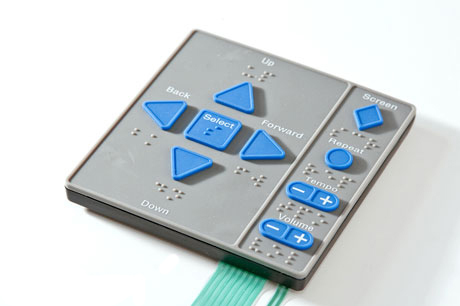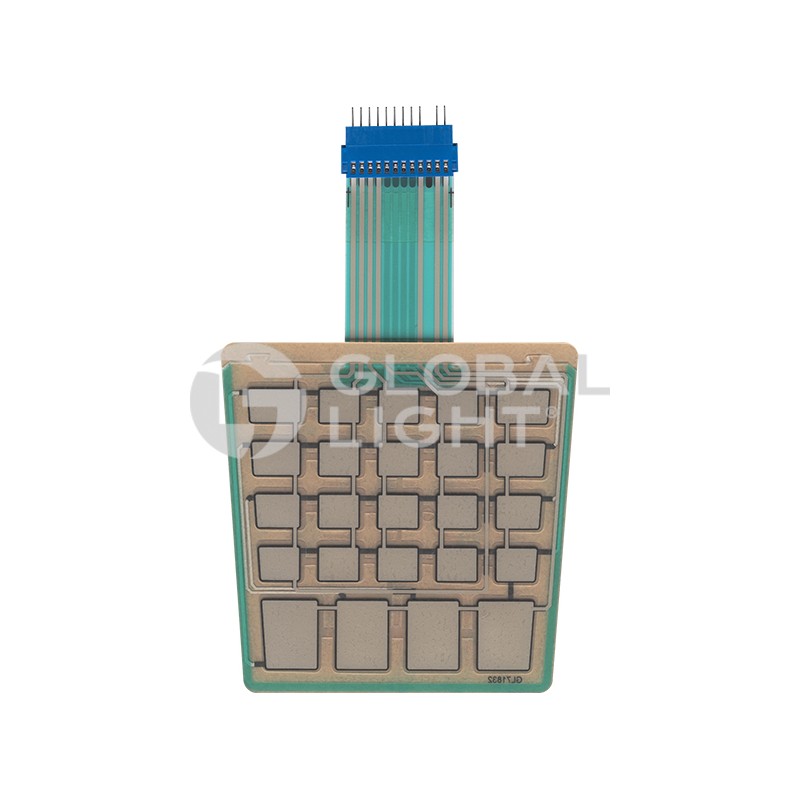How Membrane Switch Technology is Revolutionizing User Interfaces
How Membrane Switch Technology is Revolutionizing User Interfaces
Blog Article
Understanding Membrane Layer Switches: The Trick to Reliable and durable Controls

What Are Membrane Switches?
Membrane layer buttons are an advanced service in the realm of interface technology, integrating performance and design flawlessly. These gadgets serve as an interface between customers and digital systems, integrating numerous parts into a portable layout. Commonly created from versatile, slim layers of products, membrane buttons are created to react to touch, enabling users to communicate with machinery and digital devices efficiently.
The primary elements of a membrane layer button include a printed circuit layer, graphic overlay, and a spacer layer that avoids unintentional activation. The visuals overlay can be customized to show brand identity or customer choices, enhancing aesthetics while ensuring usability. Membrane switches are typically used in various applications, including medical devices, customer electronic devices, and industrial devices, owing to their sturdiness and resistance to ecological variables such as wetness and dirt.
One of the vital advantages of membrane layer switches is their ability to withstand wear and tear, making them ideal for high-traffic settings. In addition, they are lightweight and need minimal area, permitting innovative layouts in product growth. In general, membrane layer changes represent a reliable and sensible choice for modern digital interfaces, weding innovation with user-centric layout principles.
Exactly How Membrane Layer Switches Over Work
The procedure of membrane changes rest on a straightforward yet reliable mechanism that equates user input into digital signals. These switches include multiple layers, normally including a visuals overlay, a spacer layer, and a circuit layer. When a customer presses the button, the leading layer flaws, allowing a conductive element in the circuit layer to make call with an equivalent conductive pad on the underside of the graphic overlay. This get in touch with shuts the circuit and sends out an electronic signal to the tool, showing that the button has actually been triggered.
The style of membrane switches can differ, yet they usually incorporate domes or responsive aspects to supply comments to the user, improving the overall experience - membrane switch. The materials made use of in membrane switches, such as polyester or polycarbonate, add to their sturdiness and resistance to environmental aspects, consisting of moisture and dirt. Moreover, the published circuits are typically encapsulated, which secures them from deterioration with time.
Advantages of Membrane Layer Buttons

Additionally, membrane switches are understood for their toughness. Created from durable materials, they are immune to dirt, dampness, and physical wear, which significantly prolongs their life-span contrasted to standard mechanical buttons. This durability makes them especially suitable for high-traffic environments and applications calling for long life.
One more considerable advantage is the ease of cleaning and maintenance. The smooth surface of membrane switches decreases dirt buildup and is typically impervious to spills, making them excellent for setups that need constant why not find out more sanitization.
Moreover, membrane layer buttons provide a streamlined account, leading to a thinner layout that can be incorporated right into numerous gadgets without including mass. This feature not just boosts the visual allure yet additionally adds to a more ergonomic product design.
Applications of Membrane Switches
Flexible and user-friendly, membrane layer switches find applications across a large range of industries, including medical devices, consumer electronic devices, and industrial devices. In the medical field, these buttons are indispensable to devices such as diagnostic tools, client surveillance systems, and infusion pumps, where integrity and ease of cleansing are crucial. Their capacity to keep and withstand harsh environments performance makes them suitable for such applications.

In customer electronics, membrane buttons are utilized in products like microwaves, washing company website machines, and remotes - membrane switch. Their streamlined layout allows for instinctive user interfaces, improving the total individual experience while providing toughness and resistance to damage
Industrial equipment also gains from membrane layer buttons, especially in control panels for machinery and automation systems. These buttons offer defense against dirt and moisture, guaranteeing constant efficiency in difficult atmospheres. In addition, their adjustable functions permit suppliers to customize them to certain operational needs, boosting performance and performance.
Choosing the Right Membrane Layer Change
When selecting a membrane layer button, it is vital to take into consideration different aspects that affect efficiency and viability for details applications. The key considerations consist of environmental problems, tactile comments, sturdiness, and style specifications.
First, analyze the operating setting; buttons revealed to moisture, chemicals, or severe temperatures need details materials to make certain durability and capability. Next off, evaluate the demand for responsive feedback. Relying on customer interaction, some applications might benefit from a tactile reaction to validate activation, while others might choose a non-tactile design for aesthetic reasons.
Toughness is one more critical aspect; membrane switches should be designed to endure frequent use, impacts, and abrasion. Guarantee the picked button can endure the expected lifecycle, specifically in high-usage circumstances.

Final Thought
To conclude, membrane layer switches over serve as crucial components in the layout of reputable and durable control systems across different markets. Their compact layout, combined with durable building and adjustable functions, boosts customer communication while making certain durability popular settings. The adaptability of membrane layer changes enables customized solutions that fulfill certain functional demands, strengthening their significance in contemporary technology. As industries continue to evolve, the importance of integrating efficient membrane layer button options can not be overstated.
Membrane layer switches stand for an important element of contemporary interface layout, mixing performance with durability in you can try these out different applications.Membrane layer buttons are an advanced option in the world of individual interface modern technology, combining functionality and style perfectly. Commonly constructed from adaptable, slim layers of materials, membrane layer switches are developed to respond to touch, making it possible for customers to engage with machinery and digital gadgets properly.
The style of membrane layer switches can differ, however they typically include domes or tactile elements to supply responses to the user, improving the total experience.In conclusion, membrane changes offer as vital components in the style of durable and reliable control systems across different markets.
Report this page